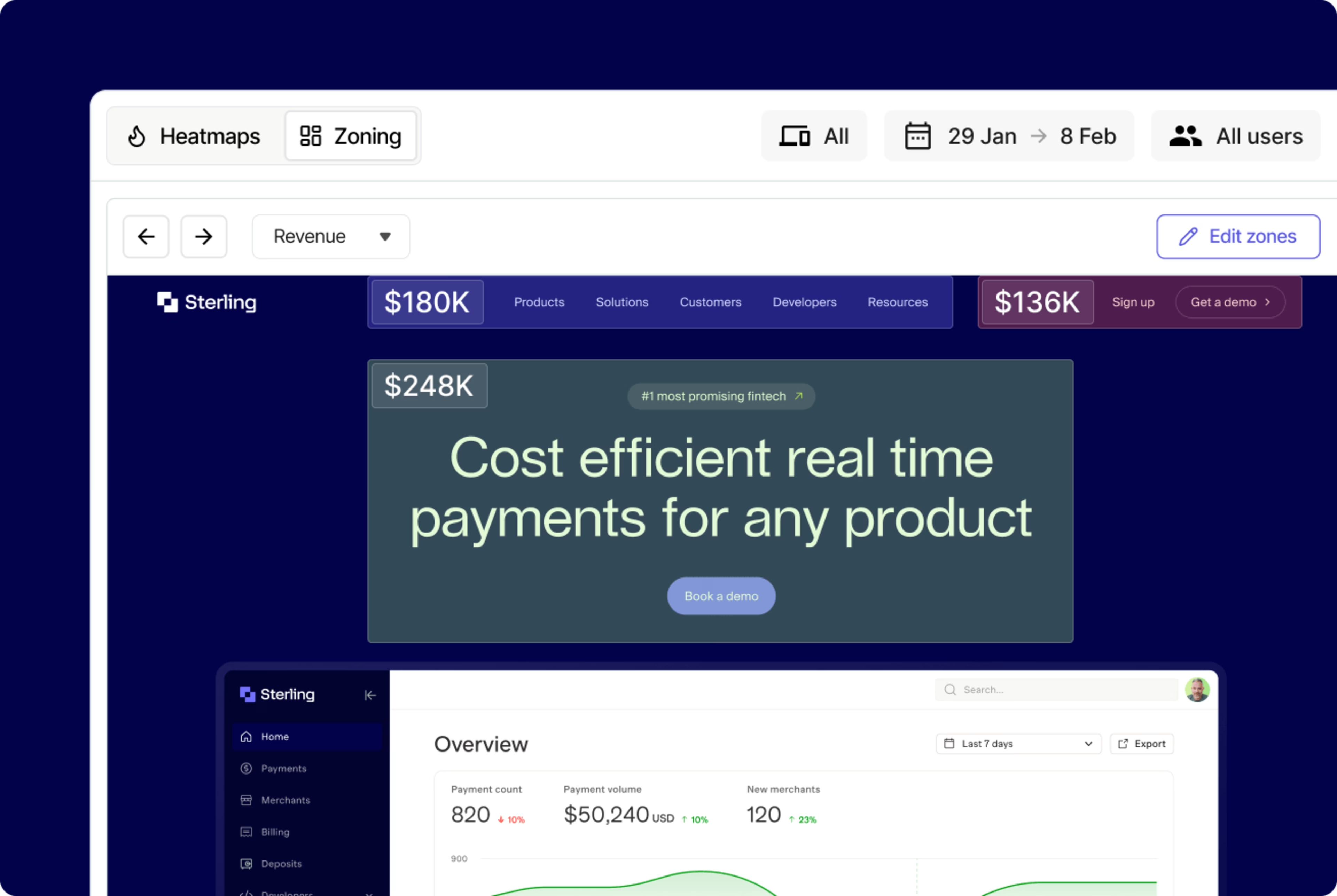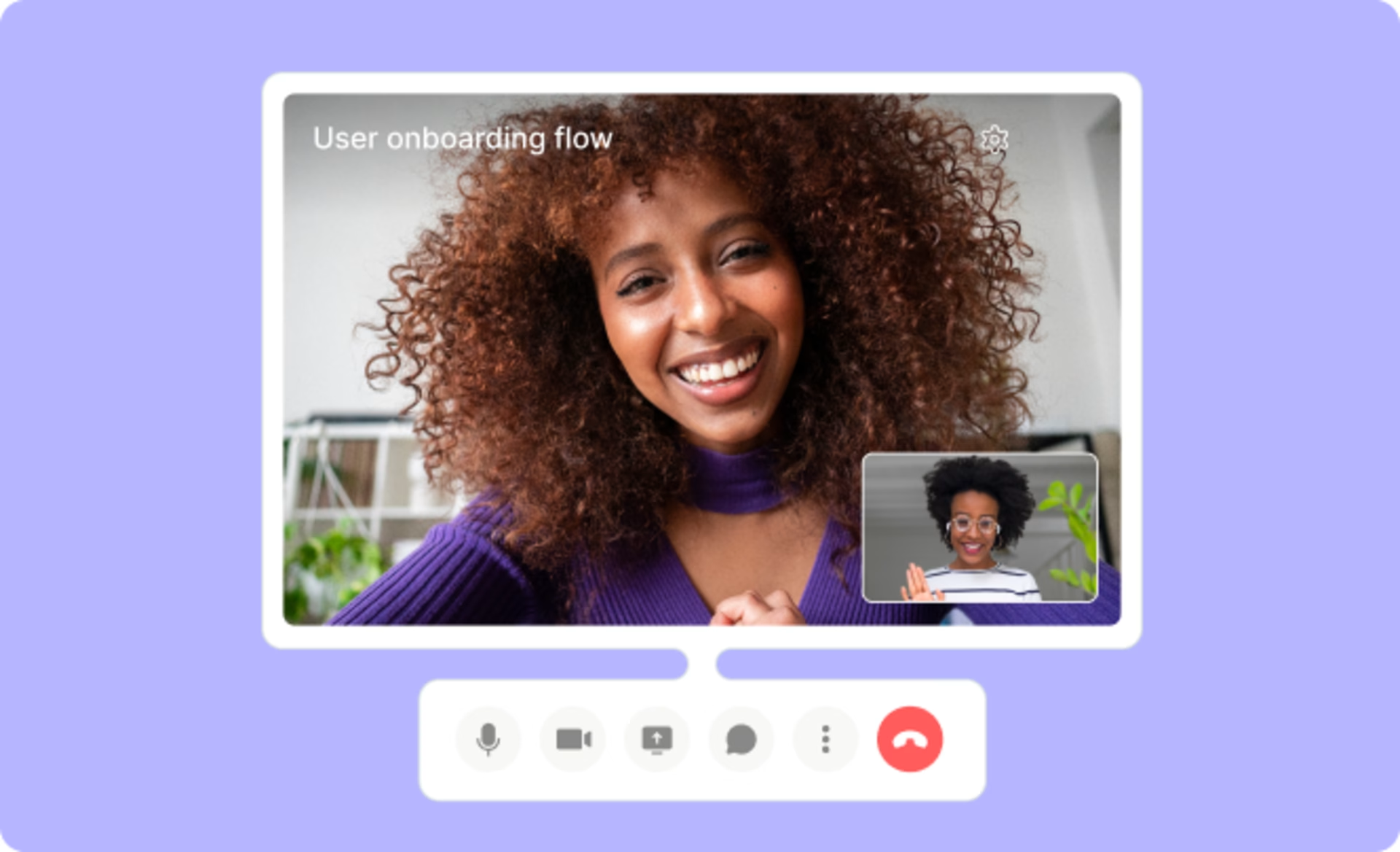Marketing campaigns play a vital role in businesses acquiring new customers, boosting sales, and increasing revenue. But measuring and evaluating campaign performance can often feel overwhelming, as success looks different for each campaign’s scope and goals.
So how can you determine whether or not your marketing campaign is successful—and optimize accordingly?
In this article, we cover seven powerful metrics and key performance indicators (KPIs) you need to measure to evaluate your marketing campaigns, including strategies to optimize them, so you gain deeper insight into what’s working and what’s not.
You'll walk away with an understanding of:
Different methods to analyze campaign performance
Practical ways to use campaign tracking and analysis tools
Important parameters to define during campaign set-up
7 ways to measure your marketing campaign's success
Marketing campaigns aim to promote a specific product or service to a specific audience, using assets like landing pages, lead generation forms, emails, and social media content that help increase brand awareness, conversions, and customer retention.
However, launching a campaign is just a small part of a successful marketing plan. It's also crucial to know which methods and metrics to use when evaluating campaign performance, so you and your team can make data-driven decisions, gain stakeholder support, and effectively delight both current and new customers.
Let’s dive in.
1. Campaign page traffic
Monitoring website traffic—the number of visitors on campaign landing pages—with website tracking tools like Google Analytics helps businesses:
Detect and resolve campaign landing page issues quickly
Identify peak-traffic periods or high-traffic sources
Compare pre- and post- campaign metrics
Analyze year-on-year campaign performance
How to increase campaign landing page traffic
Optimize on-page SEO: use keywords that address users’ problems or jobs to be done (JTBD) to improve search engine results page (SERP) rankings and landing page visibility with tools like Ahrefs or Semrush
Monitor competitors: benchmark competitor website traffic to identify gaps in your own marketing approach and make informed decisions
Review website sessions: optimize your campaign’s landing page by observing visitors’ behavior—mouse movements, clicks, and scrolls—with session recordings. Choosing the right session recordings tool can make all the difference in uncovering actionable insights
Pro tip: use Contentsquare Heatmaps to see user engagement zones, identify what landing page content resonates most with your customers, and then leverage it to drive more traffic to your website.
Engagement zones combine heatmap data—clicks, scrolls, and hovers—to reveal the most engaging parts of the page, like
Elements buried at the bottom of a page that still—when seen—get engagement
Images that impress your users overall, despite not receiving clicks
Prioritize and repurpose this delight-inducing content into your marketing plans—paid ads, social media, email campaigns—knowing it will capture your target audience’s attention and drive even more traffic to your landing page.

Reviewing engagement zones helps optimize the layout, content, and usability of your landing pages
2. Lead generation
Lead generation is the process of identifying and collecting information about potential customers who have expressed interest in your product or services.
Evaluating lead generation performance captures insights into the quality of potential customers engaging with your campaign. For example: are the people landing on your website your target audience (and therefore more likely to convert)?
How to optimize lead generation
Create targeted incentives: offer resources like whitepapers, ebooks, newsletters, or templates in exchange for new user information to build a pipeline of leads that will drive future business growth and revenue
Leverage social media: use social media to engage with your target audience, answer their questions, and provide helpful resources, building new relationships and keeping your brand top-of-mind
Pro tip: use Contentsquare Surveys to create a user persona survey that enhances campaign lead generation goals by sharpening your understanding of your target audience's wants and behaviors. You can then apply these insights to
Tailor your marketing campaign messaging to reflect customer sentiment
Test new marketing content based on your audience’s interests and pain points
Build new lead trust by proactively addressing known user pain points
Still feeling unsure? Not to worry—we've created a comprehensive user personas guide on what personas are, how to create them, and how to effectively apply them to your marketing strategies.
3. Click-through rate (CTR)
Click-through rate (CTR) is the ratio of the number of clicks on a specific link to the number of times people were exposed to the link (also referred to as 'impressions').
Tracking CTR in a marketing campaign provides businesses with insights into how effective a digital marketing campaign is in generating interest and engagement among its target audience.
For example, a low click-through rate on a social media asset could suggest your ideal customer profile ignored your marketing campaign, didn't find it interesting enough to click, or was more enticed by a competitor's campaign.
Calculate CTR with the following formula:
CTR = (clicks / impressions) x 100
How to optimize your marketing campaign's CTR
Observe user behavior: watch recordings of user sessions to understand how they engage with your website and identify opportunities for improvement
Ask for user input: launch surveys to get users’ feedback while they’re on your website, engaging with the page content or features
Test creative assets: use A/B tests or concept testing to identify which campaign creative asset variations—like copy and graphics—resonate best with your ideal customer profile
4. Sales
One of the most popular ways to measure the success of marketing efforts is to look at the impact on sales, as an effective campaign should ultimately drive more customers to purchase your products or services.
How to improve sales
Dive into funnels: use customizable funnels to track and analyze specific user segments or goals, sharpening your understanding of the customer journey
Evaluate user actions: use behavior analytics tools like heatmaps to uncover touchpoints on your pages that frustrate your users and prevent them from purchasing
Understand why users don't convert: place an exit-intent survey on your website asking visitors why they’re dropping off a page or abandoning their cart
![[Visual] funnel-analysis-in-Contentsquare](http://images.ctfassets.net/gwbpo1m641r7/54wqippOGkxHsJp3dO0xU5/5dc87604d0aef8a3940be461c47f91b5/funnel-analysis-in-Contentsquare.png?w=3840&q=100&fit=fill&fm=avif)
The Contentsquare Funnel Analysis tool lets you visualize the conversion steps in your product and shows you the relevant recordings of each step
We monitor our sales funnel to see where people abandon sign-ups without converting, and one day we noticed a huge drop in conversions from our signup page. We discovered that the autocomplete feature was broken, so we fixed it and conversions went back up immediately.
5. Return on investment (ROI)
Return on investment (ROI) measures the efficacy of your marketing campaigns by comparing the cost of the campaign vs. the revenue it generates. A positive ROI indicates that your campaign has generated more revenue than it cost to execute.
Calculate ROI with the following formula:
ROI = (income - investment) / investment x 100
How to optimize your ROI
Target high-value customer segments: identify the most profitable user segments to further tailor your marketing campaigns to their needs and preferences
Evaluate quantitative data: spot user behavior patterns over time, like identifying high-performing UTM campaigns for a particular landing page URL
Pro tip: if you're using Contentsquare, filter data from session replays and heatmaps using targeted user attributes to hone in on specific customer behavior and drive ROI.
For example, you can filter recordings to only watch playbacks of customers who spend over a certain threshold or make multiple purchases.
6. Customer retention
Customer retention—the ability to maintain existing customers over time—helps businesses learn about customer needs, wants, and behaviors, helping them make changes to foster product-led marketing.
High customer retention leads to decreased acquisition costs, giving you room to experiment with new marketing channels and strategies, whereas low retention results in lost revenue and potential brand damage due to the constant need to replace lost customers.
How to improve customer retention
Use remarketing strategies: target customers who have already interacted with your brand—and then move them further down the marketing funnel—by sending customer retention emails or using retargeting ads on social media
Test incentives: use surveys or feedback widgets to understand what types of rewards or perks customers would find most valuable, and offer them as incentives to continue to do business with you
Pro tip: if it's still unclear why your retention rates are low, get in touch with customers directly by conducting user interviews.
Contentsquare Interviews help you target and recruit the right users to quickly gain critical insights about what's working with your service or product, what's not, and ways to troubleshoot.

Quickly recruit appropriate users and easily schedule interviews with Contentsquare Interviews
7. Brand sentiment
Brand sentiment measures the perception of your company and product among customers, potential customers, and the general public.
A positive sentiment helps attract and retain customers, while a negative sentiment may drive customers away and harm your business's reputation.
Measure customer loyalty and advocacy by asking how likely they are to recommend your brand to others with a Net Promoter Score® (NPS) survey.
How to improve your online brand’s reputation
Leverage social proof: use customer testimonials, reviews, or case studies as evidence that your products are valuable and your company is dependable
Conduct a web design audit: your website is the face of your company, so you need to ensure your online presence instills enough trust in users for them to convert
Pro tip: use Contentsquare's NPS software to collect feedback from customers at periodic intervals. It also securely stores the results so you can track NPS® changes over time.
Review corresponding graphs to visualize NPS fluctuations, review open-ended feedback, or ask follow-up questions based on your customers’ initial answers for even deeper insights.

Track your customers’ loyalty and gauge brand perception over time with Contentsquare's NPS® capabilities
Defining pre-launch campaign parameters
Measuring the success of your marketing campaign is crucial to understanding its impact and optimizing future efforts. But deciding which metrics will be most effective can be overwhelming.
Here are 4 critical parameters to proactively define before your campaign launch to ensure your strategy is tailored to your intended audience, enabling you to consistently measure progress and performance.
Identify objectives: determine whether you want to raise awareness (top-of-funnel), generate leads (middle-of-funnel), or drive sales (bottom-of-funnel)
Establish the time frame: decide whether you're working with a long-term or short-term goal and then set a start date and deadline
Pinpoint your audience: define your ideal customer, their pain points, interests, and preferences
Choose channels: select the outlets—email, social media, ads—you’ll use to promote your campaign and reach your target audience
Prioritize customers when evaluating marketing campaign success
When evaluating the success of your marketing campaign, it's easy to get caught up in metrics and data. However, remember that the ultimate goal of any marketing campaign is to attract and retain customers.
Keeping customers at the forefront of your decision-making process ensures that your campaign meets their needs and delivers a positive experience. This, in turn, drives engagement, loyalty, word-of-mouth, and conversions, allowing your business to grow and stay competitive.
FAQs about evaluating marketing campaign success
Net Promoter®, NPS®, NPS Prism®, and the NPS-related emoticons are registered trademarks of Bain & Company, Inc., NICE Systems, Inc., and Fred Reichheld. Net Promoter ScoreSM and Net Promoter SystemSM are service marks of Bain & Company, Inc., NICE Systems, Inc., and Fred Reichheld

Dana is a copywriting specialist with deep expertise in creating assets like blog posts and landing pages that position organizations as the obvious first choice in their market. She holds a Bachelor of Business Administration in Marketing and has over 10 years of experience helping leading B2B brands drive traffic and increase conversions. Having taught more than 1,000 entrepreneurs the art of persuasive copywriting, Dana brings unique insight into what resonates with audiences and delivers results.
![[Stock] Man on laptop and tablet from above](http://images.ctfassets.net/gwbpo1m641r7/4mksg6vIOAFHEGsPB7eAZN/4e9862dc2438c13ccdf490785cd1c264/customer-experience-insights-man-computer-digital-1.jpg?w=3840&q=100&fit=fill&fm=avif)
